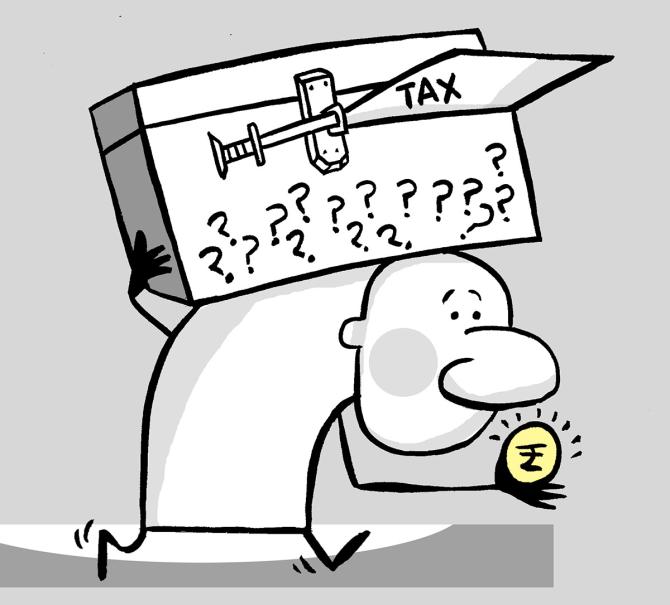'The number of leave accumulated sometimes goes up to 300.'
'The encashed amount is equivalent to almost 10 months' salary.'

Union Budget 2023 has proposed to hike the tax exemption limit on leave encashment at the time of retirement for non-government, salaried employees from Rs 3 lakh to Rs 25 lakh.
Archit Gupta, founder and CEO, Clear, says, "Normally, at the time of retirement or resignation, people get some money for not taking allotted leave. That is leave encashment. Until March 31, 2023, up to Rs 3 lakh of this amount was tax exempt. From April 1, 2023 the limit will increase to Rs 25 lakh for private sector employees."
Leave encashment is fully tax-exempt in the case of government employees.
Naveen Wadhwa, deputy general manager, Taxmann, says, "This will provide enhanced tax benefits and higher financial liquidity to employees upon retirement."
More money in employees' pockets
Over time employees amass a significant number of leave, which are encashed at retirement.
Ankit Jain, partner, Ved Jain & Associates, says, "The number of leave accumulated sometimes goes up to 300. The encashed amount is equivalent to almost 10 months' salary. For senior employees, leave encashment at times results in a payout of Rs 20 lakh or more. Of this, currently only Rs 3 lakh is tax-exempt."
The balance amount, which is not tax exempt, is taxed as 'income from salary'.
With the limit being raised from Rs 3 lakh to Rs 25 lakh, an additional Rs 22 lakh will become tax-exempt.
An employee in the 30 per cent tax bracket will save almost Rs 7 lakh in tax liability.
Suresh Surana, founder, RSM India, says, "Non-government salaried employees, who have been working for the past 20 years or more and have accumulated a huge sum of money in the form of unutilised paid leave, stand to gain the most."
Adds Sumit Mangal, partner, Luthra and Luthra Law Offices India: "This will incentivise employees to save more leave for encashment, subject to a maximum of 30 days per year of service."
Know the rules
Section 10(10AA)(ii) of the Income-Tax Act determines the amount of leave encashment that is tax-exempt.
Leave encashment received at retirement, resignation, or even termination is exempt to the extent of the least of the following: Leave balance credit at the time of payment, calculated on the basis of average salary of the past 10 months; 30 days' salary for every year of service, calculated on the basis of average salary of the past 10 months; or the exemption amount which is proposed to be increased from Rs 3 lakh to Rs 25 lakh.
Wadhwa says, "If an employee dies, the entire amount of leave encashment becomes tax-exempt."
If you encash leave during service
Leave encashed during employment is fully taxable.
Maneet Pal Singh, partner, I.P. Pasricha & Co, says, "The amount received will form part of 'income from salary' and be wholly taxable."
Surana suggests that employees should avoid encashing leave during employment.
"Do so at the time of retirement to avail the benefit of tax exemption," he says.
Points to keep in mind
The provisions regarding leave entitlement and encashment vary from one state to another.
Jain says, "Employees are entitled to paid leave of around 15-18 days in a year. Unused leaves can be carried forward up to a maximum of 30-45 days."
Whether leave can be encashed during service depends on the employer's policy.
In case of a notice period, this period may be adjusted against the number of leave, and only the balance may be encashed.
Encashment is mandatory only for paid leave. The law doesn't, however, prohibit encashment of casual leave.
Mangal says, "Income-tax provisions don't make any distinction between casual and privilege leave. Encashment of casual leaves depends on company policy. The income-tax provisions only prescribe a threshold of 30 days of leave per year of service for encashment."
Jain says the exemption provisions remain the same, irrespective of the nature of leaves encashed.
Gupta points out that the Rs 25 lakh tax exemption limit is for the entire lifetime.
If you use any of it prior to retirement, you will be able to avail of only a reduced amount of exemption at retirement.












